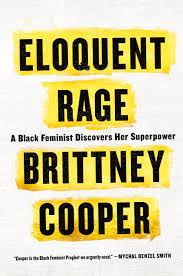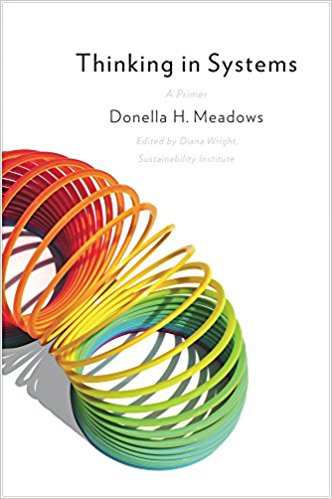Signal your turns
“People change and forget to tell each other.” – Lillian Hellman
 My sweet, old Ford Bronco II has 172,000 miles of history in it, a broken driver’s side door that has to be opened from the outside, a passenger window stuck in one position not quite all the way up to the top (very exciting when it’s snowing), no air conditioning, and a busted driver’s seat that has to be bolstered up with a very large pillow unless you prefer driving in the blessed horizontal. Add the effluvia of a toddler (Cheerios) and a teenager (Napoleon Dynamite temporary tattoos) and you might approximate my Hot Ride. A Lamborghini Murcielago it ain’t.
My sweet, old Ford Bronco II has 172,000 miles of history in it, a broken driver’s side door that has to be opened from the outside, a passenger window stuck in one position not quite all the way up to the top (very exciting when it’s snowing), no air conditioning, and a busted driver’s seat that has to be bolstered up with a very large pillow unless you prefer driving in the blessed horizontal. Add the effluvia of a toddler (Cheerios) and a teenager (Napoleon Dynamite temporary tattoos) and you might approximate my Hot Ride. A Lamborghini Murcielago it ain’t.
But this Jethro-mobile is a dear, old friend, transporting me through many, many transitions, like the big one during which I bought it 14 years ago. I was pregnant with my older daughter, Emma.
 Until then, I didn’t have a car. Living in a big city with an extensive Metro system, no parking to speak of, and a police force with a healthy ticket quota system, I didn’t much need one.
Until then, I didn’t have a car. Living in a big city with an extensive Metro system, no parking to speak of, and a police force with a healthy ticket quota system, I didn’t much need one.
 When I got good and big and pregnant, people started veering away when they saw me wobble down the street on that bike, my balance affected by the addition in the middle front, their faces frozen like Munch’s “Scream,” fearing I might give birth in second gear.
When I got good and big and pregnant, people started veering away when they saw me wobble down the street on that bike, my balance affected by the addition in the middle front, their faces frozen like Munch’s “Scream,” fearing I might give birth in second gear.
 All that time, I thought I was signaling my turns, but I wasn’t. The people around me couldn’t tell what I was going to do next and got angry as they realized I was turning (or not). There was no indication of my intention. They didn’t know and yet, I thought I was clearly telling them, dutifully shifting my turn signal lever up and down, hearing a click, click, click, and not knowing that it didn’t translate into the outside world. I thought they knew; they didn’t. They thought I was withholding information from them; I wasn’t, or at least I didn’t think that I was.
All that time, I thought I was signaling my turns, but I wasn’t. The people around me couldn’t tell what I was going to do next and got angry as they realized I was turning (or not). There was no indication of my intention. They didn’t know and yet, I thought I was clearly telling them, dutifully shifting my turn signal lever up and down, hearing a click, click, click, and not knowing that it didn’t translate into the outside world. I thought they knew; they didn’t. They thought I was withholding information from them; I wasn’t, or at least I didn’t think that I was.
Paul Watzlawick is one smart man. Author of Change: Principles of Problem Formation and Problem Resolution (and many other books), he defines 5 basic axioms in his theory on communication that are necessary to have a functioning communication between two individuals. If one of these axioms is disturbed, communication might fail, he asserts:
- One Cannot Not Communicate: Every behavior is a kind of communication. Because behavior does not have a counterpart (there is no anti-behavior), it is not possible not to communicate. Even not signaling signals.
- Every communication has a content and relationship aspect such that the latter classifies the former and is therefore a metacommunication: all communication includes, apart from the plain meaning of words, more information –information on how the talker wants to be understood and how he himself sees his relation to the receiver of information. Signals indicate both intention and connection to.
- The nature of a relationship is dependent on the punctuation of the partners’ communication procedures: Both the talker and the receiver of information structure the communication flow differently and interpret their own behavior as merely a reaction on the other’s behavior (i.e. every partner thinks the other one is the cause of a specific behavior). Human communication cannot be devolved into plain causation and reaction strings, communication rather appears to be cyclic. The dance at the traffic light is a dance of partners: it takes two to tango.
- Human communication involves both digital and analog modalities: Communication does not involve the merely spoken words (digital communication), but non-verbal and analog-verbal communication as well. Signals are not always literal, but contextual.
- Inter-human communication procedures are either symmetric or complementary, depending on whether the relationship of the partners is based on differences or parity. Like most things, signals depend on power—who has the right of way?
When we change lanes, and particularly if we don’t use our turn signal, we trigger a lot of reactions (the emphasis is mine):
“Resistance to change has generally been understood as a result of personal experiences and assessments about the reliability of others. Why is there resistance to change in organizations? An overview of the literature reveals that resistance occurs because it threatens the status quo (Beer, 1980; Hannan & Freeman, 1988; Spector, 1989), or increases fear and the anxiety of real or imagined consequences (Morris & Raben, 1995; Smith & Berg, 1987) including threats to personal security (Bryant, 1989) and confidence in an ability to perform (Morris & Raben, 1995; O’Toole, 1995). Change may also be resisted because it threatens the way people make sense of the world, calling into question their values and rationality (Ledford, et al., 1989), and prompting some form of self justification (Staw, 1981) or defensive reasoning (Argyris, 1990). “
 I’m at the traffic light, waiting to turn. You don’t signal so I don’t know which way you are going. People have cut me off in this situation before, so I make a quick assessment of whether I can trust you. I’m also fearful because I’m afraid you’ll either hit me or make me waste 5 seconds of my precious time while I watch you so I can know how to react. Your not signaling threatens my safety, diminishes my confidence in my ability to perform, and undermines my understanding of the traffic pattern. If I make the wrong move once the light turns green, I’ll justify it to myself by blaming you for not signaling.
I’m at the traffic light, waiting to turn. You don’t signal so I don’t know which way you are going. People have cut me off in this situation before, so I make a quick assessment of whether I can trust you. I’m also fearful because I’m afraid you’ll either hit me or make me waste 5 seconds of my precious time while I watch you so I can know how to react. Your not signaling threatens my safety, diminishes my confidence in my ability to perform, and undermines my understanding of the traffic pattern. If I make the wrong move once the light turns green, I’ll justify it to myself by blaming you for not signaling.
David and I use an exercise in our work that we call Triangle Boid. We’ve done it with small groups and groups with hundreds of people, to the same end. Each person in the group is asked to secretly identify two other people in the room who will serve as two points of a triangle for them, using themselves as the third point.
 The Bronco is still going strong-ish, but I fear for its health as it reaches 16 this year. I’m (not so) secretly desiring a Vespa. With turn signals.
The Bronco is still going strong-ish, but I fear for its health as it reaches 16 this year. I’m (not so) secretly desiring a Vespa. With turn signals.






